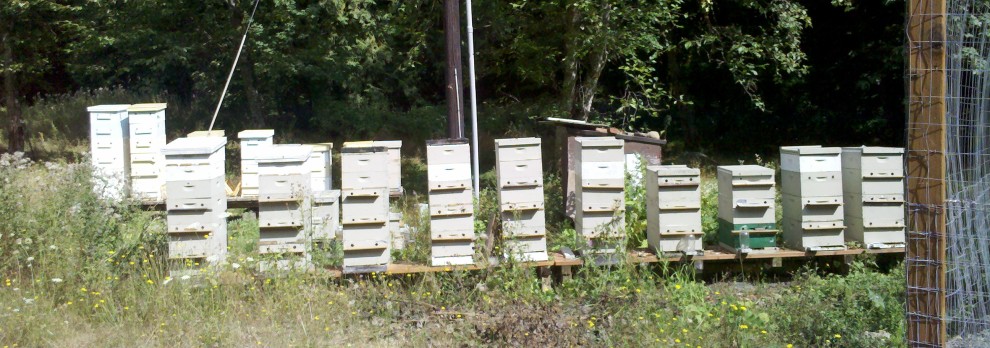Question emailed after a club meeting…
I was at your presentation last Monday night in Olympia. I was the one that asked if you could phrase a question in your survey about whether the keeper using a screen bottom board leaves the sliding board in or has an open screen floor. The reason I asked is because after using screen bottom boards for years, I discovered, in my apiary, that an open screen floor is a death sentence for a colony in the Pacific Northwest. The result that the loss rate was about the same for using SBB as it was for not using them, I really believe needs clarification in details.
Perhaps questions along the lines of;
If you use SBB’s what best describes your management style with them? I have open screen floors. I have sliding boards/enclosed SBBs. I use my SBB’s in correlation with an IPM program.
Response by Dewey
We really do have a limitation on the numbers of questions we can put on the survey. You pose some interesting questions however and we will consider some revisions to clarify for next survey year.
I really think our survey this year does however point out that whether one uses a SBB and whether one leaves it open over the winter or closes it, makes NO DIFFERENCE at least with respect to overwinter losses. This is not to dismiss your experience. What works for you and your apiaries consistently please don’t change because others might not do it the same way. If you find an open bottom screen is detrimental, “a death sentence”, then don’t change back to one.
For others however the result was different. In our 2015 survey when we asked the question on SBB use as a non-chemical treatment we found for those 150 individuals. For Langstroth 8 frame hives 97 fall colonies had 73 still alive in the spring =25% loss rate and for those with Langstroth 10 frame hives of 596 fall colonies there were 440 alive the next spring = 26% loss rate. The overall loss rate was 27% with a 3 % rate of variation. This means the Langstroth 8 and 10 frame losses fell within the loss rate and were not significantly lower, i.e. no real difference between 25% or 27%.
When I compared the loss rate for those 33 individuals who said they did not use screen bottom boards, their loss rate was 25% and for those individuals who said they had a SBB on 100% of their colonies (97 individuals) the loss rate was 27%. There is no significant difference between 25% and 27% . There were a small number who used SBB on less than 100% of their colonies but I did not do that analysis as there were too few numbers to create a significant result.
Finally I did ask indirectly about what you were interested in learning. I asked in survey if SBB were closed in the winter (the never response) or they were always left open. Those who checked never (107 total) had 24% loss, those who checked sometimes had 27% loss, and those who closed them in winter (55 totals) had 31%, the heaviest loss. Although this is a trend, there is no statistical difference in these numbers, i.e. 31%-27% =25%.
So in retrospect I think I did ask the three questions you had except I didn’t specify if the screens had sliding boards or some other way of closing,(for those who did close. This result agrees with our larger data base of BIP – no difference evident in winter survival whether the bottom is a screen or solid bottom board or whether the board is open for part of the year. We do recommend it be closed when fumigating with Apiguard or Api Life Var – at least for that first week.
